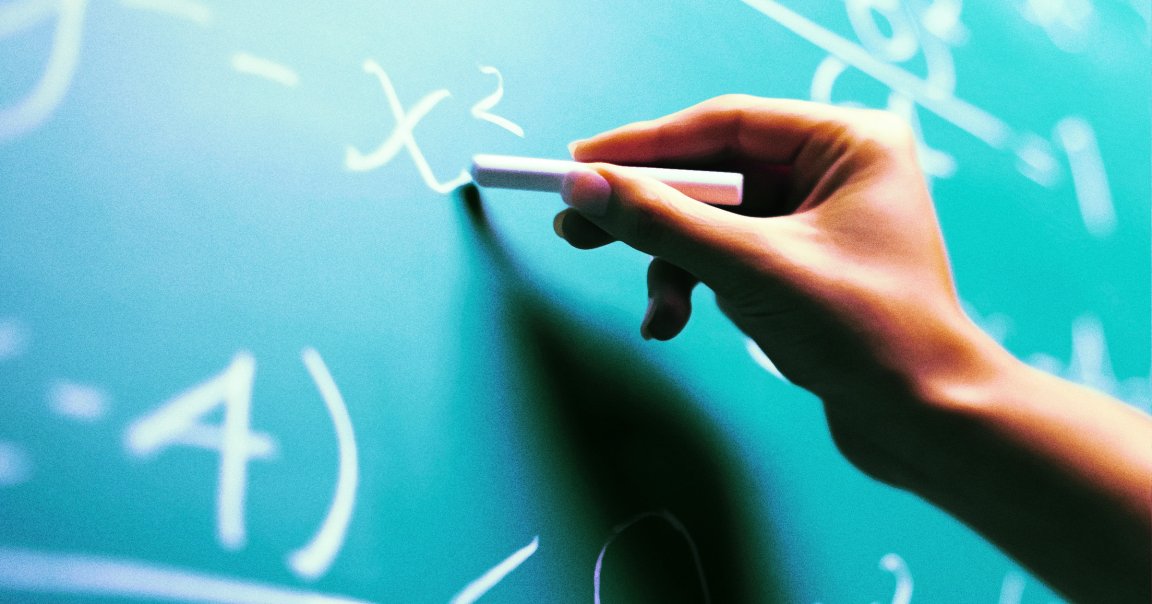
A brilliant teen who honed her skills during the COVID-19 pandemic has solved one of math’s most mysterious problems — and in doing so, become a rising star.
As Quanta magazine reports, fledgling mathematician Hannah Cairo was just 17 when she disproved the Mizohata-Takeuchi conjecture, a decades-old proposition — in higher math, it’s common for the suggestion that something is true based on observations to become a target for challenging formalized counter-proofs — dealing with waves on surfaces that nobody had ever successfully countered before her.
The homeschooled math whiz mastered calculus at 11, taught herself from grad school-level textbooks, and worked remotely with professors who her parents hired as tutors, the magazine reports. When COVID lockdowns hit in 2021, Cairo did what millions of others around the world did: she took up a hobby, in the form of the Chicago branch of the Math Circles club that brings teachers and students together to solve math problems.
Upon learning about the prestigious Berkeley, California branch of the club and its two-week online summer program, Cairo decided to spread her wings and aim westward. At 14 years old, she wrote in her 2022 application for the program that she already possessed a self-taught body of knowledge equivalent to an advanced undergraduate math degree — and naturally, she got in.
“Hannah is above and beyond the ordinary,” enthused Zvezdelina Stankova, a University of Berkeley mathematician who founded the city’s Math Circle, in an interview with Quanta. “Every time she applies for school or a program, she is several levels ahead.”
After completing the program for a second time, Cairo began to consider attaining a formal higher education to complement her self-taught knowledge. Stankova guided her to Berkeley’s concurrent enrollment program, which allows gifted students like Cairo to take college classes at the university while finishing high school. Once again, Cairo got in, and it was there that she met mathematician and professor Ruixiang Zhang, who introduced her to the Mizohata-Takeuchi conjecture.
Despite her brilliance, the talented teen struggled tremendously, Quanta notes, with the problem. When Zhang first assigned a simplified form of the conjecture to his students, he encouraged them to think more deeply about their proofs to see if they could be broadened for more complicated versions of the problem. Cairo took him up — only to have her initial theories repeatedly shot down.
“I went to office hours and asked him, ‘Do these ideas work?’ It turned out they didn’t because they were silly,” the teen told the magazine. “There’d be this back-and-forth. I’d come to office hours with new ideas and ask if they work. And he’d say no.”
Frustrated but not demoralized, Cairo persisted in her thought experiments, eventually figuring out a novel approach to the conjecture that involved a strange array of waves that all lay on a single curved surface. Instead of canceling each other out, as they would in the original theorem, they amplified each other in a manner the Mizohata-Takeuchi conjecture prohibited.
Startled by her own work, Cairo simplified it to make it as straightforward as possible — and this time, Zhang was compelled by it.
After penning a paper on her proof that was released this February ahead of peer review, the mathematical world was in an uproar — especially when they found out how young Cairo was.
“We were all shocked, absolutely,” explained Itamar Oliveira, a math researcher at the UK’s University of Birmingham who has spent years focused on the Mizohata-Takeuchi. “I don’t remember ever seeing anything like that.”
University of Edinburgh mathematician Tony Carbery, who has spent decades studying the conjecture, was similarly stupefied, especially upon learning how young Cairo was when she wrote her paper.
“I was absolutely [like], ‘Wow,'” he told Quanta. “This has been my favorite problem for nigh on 40 years, and I was completely blown away.”
While the math world heralded its newest star, the girl herself decided once again to change scenery — this time for the University of Maryland, which along with Johns Hopkins was the only graduate school willing to admit her without a high school diploma or undergraduate degree. She starts in the fall, Quanta notes, and when she finishes, that degree will be her first.
More on unique youth: Baby Born Already 30 Years Old